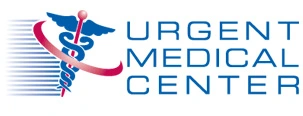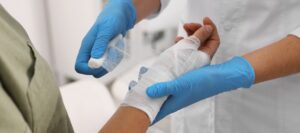
Muscles can be torn in a number of ways, from physical activity to lifting an unusually heavy box up the stairs. Even something as seemingly simple as stepping off of a sidewalk curb can cause a muscle to tear if your body is not ready for the movement.
More commonly, only a few muscle fibers are torn or overstretched, while the majority of the muscle remains healthy and in tact. In more serious cases, the muscle may tear badly enough to completely prohibit its use.
Diagnosing Torn Muscles
In order to help diagnose different levels of torn or strained muscles there is a classification system doctor’s use, including Grade I, II, and III strains.
Grade I strain is considered a mild injury in which only a few muscle fibers are injured. This will result in pain and tenderness but the muscle will maintain its average strength.
Grade II strain is considered a moderate injury. More muscle fibers are torn with this type of strain and as a result discomfort tends to be more severe. You may notice some loss of overall strength, bruising, and/or mild swelling.
Grade III strain occurs when the muscle tears all the way. This is sometimes accompanied by a popping sound as the muscle tears into two, or rips away from the tendon. This is a serious injury that causes muscle function to completely deteriorate. You will experience a great deal of pain and discomfort with this type of strain including tenderness, discoloration, and swelling. Since this type of strain causes the muscle to break apart you may notice a “gap” visible beneath the skin.
Symptoms of A Torn Muscle Include:
- Pain and tenderness of the muscle
- Swelling and/or discoloration
- Cramps or muscle spasms
- Decrease in muscle strength, or complete loss of muscle function
- Hearing a pop in the muscle at the time of the injury
- A gap or dent in the muscle
Muscle Soreness Vs. Muscle Tears
After a vigorous work out you might wake up and find it hurts to walk, or even lift your arm to put on deodorant. It is completely normal to experience muscle discomfort and tenderness after physical activity, especially if you are just starting a new work out program.
Rich Sharp, a professor of exercise physiology at Iowa State University in Ames says, “Muscles go through quite a bit of physical stress when we exercise. Mild soreness just a natural outcome of any kind of physical activity, and they’re most prevalent in beginning stages of a program.”
Delayed onset muscle soreness occurs 24 to 48 hours after physical activity. This is a result of exerting muscles past what they are used to. For instance, running downhill or doing a lot of bicep curls can lead to mild muscle strain, which does include microscopic tears in the muscle. Even body builders and professional athletes experience delayed onset muscle soreness.
How To Help Prevent Muscle Strain & Tears
- Adequately stretch before you work out to help loosen muscles and prevent injury
- After working out cool down with light exercise and stretching
- When starting a new exercise program take it easy for a few days after your muscles become very sore, try swimming or walking instead of more vigorous exercise.
- Focus on having good posture when you sit, stand and exercise
- Learn and utilize the proper techniques for lifting heavy loads
(Read more)
Treatment For Muscle Injuries
Treatment will differ depending on the grade of muscle strain you are diagnosed with.
Grade I and Grade II strains require “RICE”:
Rest
Ice
Compress
Elevate
Pain medications, such as Advil, can help reduce pain and inflammation.
Grade III strains typically require more serious treatment, such as a visit with an orthopedic specialist. You may also need a cast or surgery to properly heal.
Most mild strains should heal on their own fairly quickly, although more serious muscle tears may require rehabilitation.
When To Visit A Doctor For Muscle Strains:
- You hear or feel your muscle pop at the time of injury
- The injured muscle experiences extreme swelling, discoloration or pain
- The muscle is greatly weakened or immobilized
- The pain does not improve within 48 hours
- You experience back pain that immobilizes you from normal day-to-day activities
- Mild back pain that gets worse instead of better within a few days.
- Back pain that accompanies fever, chills, painful urination, numb or tingling sensation in legs, groin or rectum, or difficultly controlling bowel and/or bladder functions.





